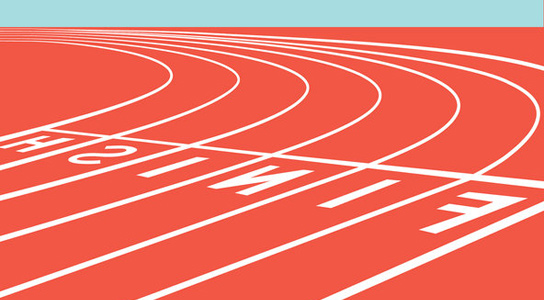
Backward running allows people to avoid or recover from common injuries, burn extra calories, and improve balance. Credit: Ben Wiseman
Backward running will never be mistaken for the natural way of running, but there are some indications that backward running enables people to avoid or recover from common injuries, burn extra calories, and sharpen balance while mixing up their daily routine.
The scientists published their findings in the Proceedings of the Royal Society B: Biological Sciences.[1] Training with backward running is quite different than usual running. As expected, it was discovered that runners struck the ground near the back of their feet when going forward, and rolled onto the front of their feet for takeoff. When they were going backward, they landed near the front of their feet and took off from the heels. They tended to lean slightly forward, even when running backward. As a result, their muscles fired differently. In forward running, the muscles and tendons are pulled taut during landing and respond by coiling, creating elastic energy that is released during toe-off. When running backward, muscles and tendons were coiled during landing and stretched at takeoff. The backward runners’ legs didn’t benefit from stored elastic energy in their muscles
Running backward requires 30% more energy than running forward at the same speed. Backward running also produced far less hard pounding. Giovanni Cavagna, a professor at the University of Milan who led the study, states that reverse running can potentially “improve forward running by allowing greater and safer training.”
In a second study, researchers found that runners with bad knees also benefited from backward running because it causes far less impact to the front of the knees. And it burns more calories. In a third study, active female college students who replaced their exercise with jogging backward, 15 to 45 minutes three times a week for six weeks lost almost 2.5% of their body fat.
It has some drawbacks, like not being able to see where you’re going, so it should be done on a track or treadmill at a slow speed to start.
References:
- “Running backwards: soft landing–hard takeoff, a less efficient rebound” by G. A. Cavagna, M. A. Legramandi and A. La Torre, 18 August 2010, Proceedings of the Royal Society B: Biological Sciences.
DOI: 10.1098/rspb.2010.1212 - “Patellofemoral joint compression forces in backward and forward running” by Paulien E. Roos, Nick Barton and Robert W. M. van Deursen, 13 April 2012, Journal of Biomechanics.
DOI: 10.1016/j.jbiomech.2012.03.020 - “The Effect of Backward Locomotion Training on the Body Composition and Cardiorespiratory Fitness of Young Women” by E. Terblanche, C. Page, J. Kroff and R. E. Venter, 26 August 2004, International Journal of Sports Medicine.
DOI: 10.1055/s-2004-820997









Be the first to comment on "The Benefits of Backward Running"